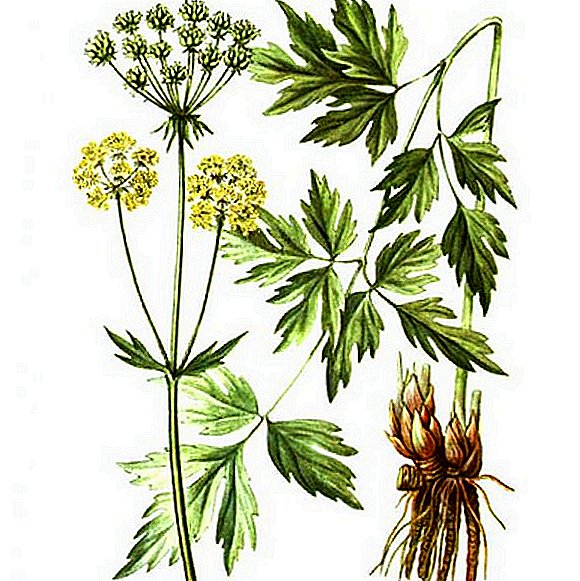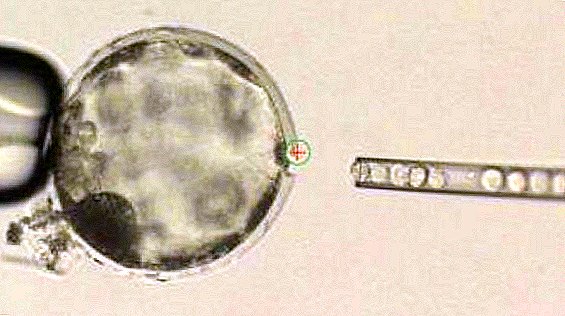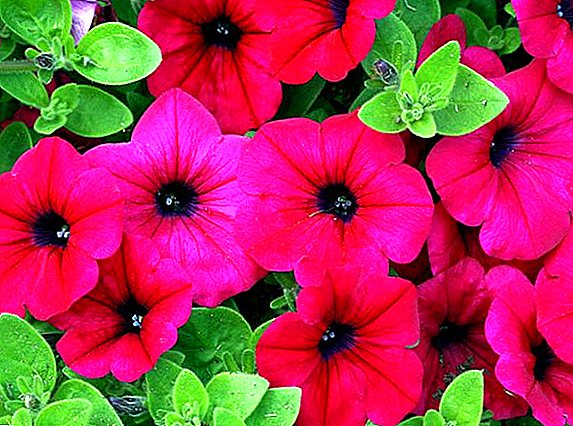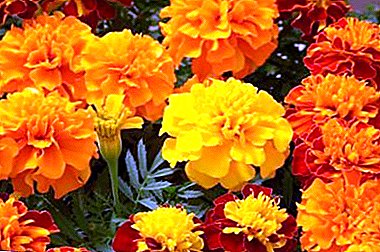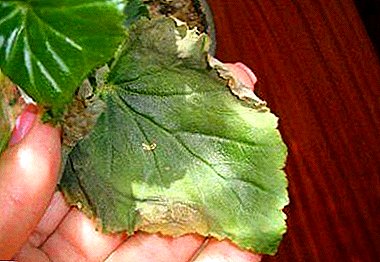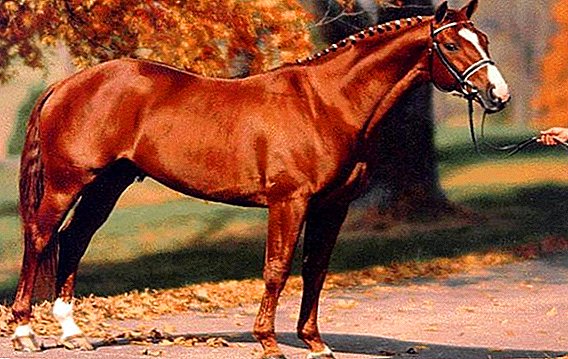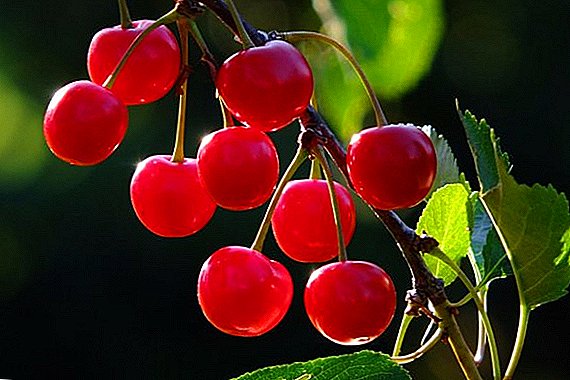 Cherry "Ural Ruby" is a small bush that reaches a height of one and a half meters. Several photos of this cherry are presented in the article.
Cherry "Ural Ruby" is a small bush that reaches a height of one and a half meters. Several photos of this cherry are presented in the article.
This variety has excellent yields and can also adapt to difficult weather conditions.
Considered cherry differs late flowering, good fruits that ripen together.
Breeding history
Breeding the "Ural Ruby" cherry was first taken up in the 1950s. In the middle of the 20th century, the Ural breeder N. Gvozdyukova, who represented the Sverdlovsk Experimental Horticulture Station of the Ural NIISH, worked on this project together with S. Zhukov, who represented the Central General Laboratory. I.V. Michurin. A representative of the Tambov breeding organization gave seedlings of an unknown “Michurinsky” variety as the basis for a new variety. Ural people used the seeds of the local steppe variety “Ideal” for crossing. As a result, a variety came out, which was zoned and introduced in 1959 into the State High-quality Register of the Ural, Vyatka and West Siberian regions of the Russian Federation.
A representative of the Tambov breeding organization gave seedlings of an unknown “Michurinsky” variety as the basis for a new variety. Ural people used the seeds of the local steppe variety “Ideal” for crossing. As a result, a variety came out, which was zoned and introduced in 1959 into the State High-quality Register of the Ural, Vyatka and West Siberian regions of the Russian Federation.
Currently, the Ural Ruby is particularly popular in the Chelyabinsk, Perm and Sverdlovsk regions.
Characteristic variety
Consider a detailed description of this type of cherry. "Ural Ruby" is a small bush with spreading branches.
In search of the optimal variety for your plot, you can study the characteristics of the cherries of Zhukovsky, Lyubskaya, Black Large, Turgenevka, Vladimirskaya, Shokoladnitsa, Kharitonovskaya, Molodezhnaya.
Tree description
Cherry height reaches 1.5 m, sometimes it can grow up to 1.8-2 m. Crohn of the considered cherry variety of average neglect. When it is formed, the whole form is formed with medium spreading branches.
Fruitful in this tree are annual growths and bouquet branches. The leaves, which are noticeably shiny, their shape is similar to the boat. Foliage has a broadly leathery type. 
Fruit Description
The fruits of this cherry are dark red, of medium size. Their weight is about 3.2 g. Berries have a rounded shape, taste sweet-sour. The tasting score of "Ural Ruby" was 2.8 points. Its fruits contain on average 9% of sugars, 1.6% of acids, and also about 15 mg of vitamin C. Juice of red color; the stem is medium in size, firmly attached to the fetus; small bone, conveniently separated from the pulp.
Did you know? Bones and cherry seeds can not be eaten in large quantities, because they can easily be poisoned.
Pollination
This cherry is self-infertile variety, i.e. the plant has a specific type of flower structure. This prevents the development of cherries due to the self-fertilization of their own pollen.
Therefore, if there are no pollinators on your site, it will bloom beautifully every spring, while not giving a harvest. Therefore, be sure to take care to grow near it pollinators, which are suitable for this variety.  The tree is an excellent pollinator, which for several decades has been used for growing and breeding high-yielding varieties of cherries. The best varieties for pollination "Ruby Ural": "Mayak", "Zagrebinskaya", "Polevka", "Zvezdochka", "Alatyrskaya" and "Generous".
The tree is an excellent pollinator, which for several decades has been used for growing and breeding high-yielding varieties of cherries. The best varieties for pollination "Ruby Ural": "Mayak", "Zagrebinskaya", "Polevka", "Zvezdochka", "Alatyrskaya" and "Generous".
Gestation period
Its fruits ripen late (first half of August) and hang on the branches for a long time. Fruiting is worth the wait for the third year after the tree has been planted.
Yield
The yield of cherries is high, on average from one such tree you can get up to 6 kilograms of fruit. There were cases when in the middle zone of the Russian Federation the harvest from a tree was up to 14-15 kg.
Winter hardiness
Trees of the "Ural Ruby" cherries can adapt well to the unfavorable climate. It has good frost resistance. Wood can withstand temperatures below -30-35 ° C.
Did you know? Cherry is very cold resistant. This plant grows in the wild, even in the Himalayas.

Application
Cherry ripens quite late, the crop from it is used more for processing. The fruits of this type of cherry can be eaten raw, dried or preserved.
You can make compotes, jams, jellies, syrups, tinctures, fruit drinks, and fruit water from the berries. The leaves of the Ural Ruby are added to pickling cucumbers or other vegetables.
This plant is used in beekeeping, as it is an excellent honey plant. Also, the cherry is planted as an ornamental plant.
Planting rules for young seedlings
In order to take root, you need:
- right to prepare the pit;
- make the necessary fertilizers;
- observe the rules and landing technique;
- choose quality planting material;
- plant in the correct period of the year.
Optimal timing
This sort of cherry is planted in spring when buds are blossoming, or until mid-autumn. But spring planting is best suited for it, because after the fall the young sapling may freeze if there are early frosts.
Choosing a place
The seedling should be planted where there is a lot of sunlight and there is constant airing. It is also important that in the place of its landing there was no stagnation of groundwater, which come to the surface of the earth. The soil for planting seedlings should be light, loose and preferably loamy.
Process and scheme
When planting bush varieties, the distance between them must be done from 2 meters. The landing hole should be 50 cm in diameter and the same depth. At the bottom of the hole must be put fertilizing, consisting of humus, 20 g of potassium chloride, up to 40 g of superphosphate and ash. When clay soil can still add one bucket of sand.
Then a peg is driven into the hole, to which the tree should be tied. The roots are pre-cleaned from damage and soaked for 3 hours, then they are carefully lowered into the hole and covered with soil, tightly tamping the soil.
Important! Water the plant to two or three buckets of warm distilled water.In order to prevent water from spreading during watering, it is necessary to form a radial earthen roller around the sapling of the seedling, the diameter of which should be 60 cm.
 If everything is done correctly, then the root neck of the tree after watering and lowering the soil will be at ground level. If you make a mistake - not scary! This can be corrected by popping the ground or excavating excess soil. After planting on the foot of the seedling should pour out the mulch in the form of sawdust or compost.
If everything is done correctly, then the root neck of the tree after watering and lowering the soil will be at ground level. If you make a mistake - not scary! This can be corrected by popping the ground or excavating excess soil. After planting on the foot of the seedling should pour out the mulch in the form of sawdust or compost.Features seasonal care for cherries
Caring for the Ural Ruby Cherry after planting does not differ from that which is needed by all trees of this type: fertilizer, watering, pruning of old branches and loosening the soil if necessary.
Watering and loosening
During the growing season, 3-4 irrigations will be enough for the cherries to be performed during the tree development phases:
- the first time the tree must be watered after flowering;
- the second watering occurs at the moment of formation of the ovary (after June shedding);
- the third watering should be done after harvest or in early autumn;
- 4th watering - podzimny, in mid-October.
The rate of vegetative irrigation for cherries is 5-7 buckets per tree and depends on age. 
Fertilization
Fertilizers, which contain potassium and phosphorus, are introduced in the fall, so that this process will fall under digging. Organic matter (compost or rotted manure) is added every three years. Nitrogen is introduced in the spring, right under the bush of the plant.
At the same time it is necessary to conduct two additional feeding. The first occurs during flowering, the second - 14 days after its termination, for this purpose, mullein and ash are used.
Supporters of organic matter, it is important to know the features of the use of charcoal, sheep, pig, rabbit, horse, cow dung, chicken manure as a fertilizer, as well as methods for preparing a dressing of nettle, yeast, ammonia.
Fight against diseases and pests
Ural Rubinovaya perfectly resists cherry aphid and slimy sawfly, but can have fungal disease - coccomycosis. It is possible to speak about the infection by spores of a fungus, if brown spots on the leaves are found on the tree, as well as their sudden friendly shedding, which occurred much earlier than the established time, was noticed.
This is very dangerous for a tree, because a bare plant is unable to eat normally. As a result, it quickly weakens, which over time can lead to his death. To prevent this from happening, the tree must be treated with the help of fungicides (Copper sulfate, Topaz, Rayok, Horus, Abiga-Peak). 
Important! If a tree is sick, it must be treated with fungicides three times a season - before flowering, during it and three weeks after flowering.
Cropping and crown formation
It is desirable to cut the tree before the first buds appear on it, so that the plant has time to get stronger during the period of active growth and flowering.
After planting the seedling, it should be left to about 10 of the most developed and strongest branches (about 5 branches are left for the trees). The remaining branches are cut without leaving hemp, and the place of cutting should be immediately smeared with garden pitch.
The branches that remained after circumcision should look in different directions and be different from each other at a distance of 10 cm.
The main rules for pruning young cherries:

- in the second year, the branches growing inside the crown are pruned, and the shoots formed on the shtambu break off in the summer (while they are green). This will help prevent bush thickening;
- it is necessary to shorten the shoots that have grown over half a meter in length;
- during the growth of cherries, new skeletal branches should be left on the trunk. This will help to form the crown correctly. As a result, the main branches will remain 12-15;
- dry and diseased branches must be removed annually.
- the correct formation of the tree, so that it will not be one-sided with a thickened crown;
- the harvest will grow at times;
- berries will be more and more pleasant to the taste;
- removing old and diseased branches protects the plant from pests;
- the tree grows younger after pruning and grows older.
Important! Cut the cherry should be every year from a young age.
Protection against cold and rodents
To protect the cherries from early frost, you need to use smoke: in the early morning when frost starts in the garden, heaps of straw, hay or other similar materials should be set on fire. At the same time, they should be slightly damp, so that there is no fire, but a lot of smoke.  The tree can be protected in another way - to delay the time of its flowering. This will reduce the chance of hitting the return frost. To do this, you must trample the snow tightly around the cherry, and then cover it with a large layer of straw or hay.
The tree can be protected in another way - to delay the time of its flowering. This will reduce the chance of hitting the return frost. To do this, you must trample the snow tightly around the cherry, and then cover it with a large layer of straw or hay.
Protect the cherry from rodents You can use wood ash, peat chips or soaked with creolin or kerosene sawdust. This all scares off rodents. In addition, cats and hedgehogs are good assistants in combating them.
Rodents do not like certain odors. Therefore, some gardeners are advised to spray the trees with a solution of mint or coat them with odorous bacon or tar.
"Ural Ruby" is used as a fruit crop. Reviews of gardeners about this sort of cherry are only the most positive. It is especially valuable because of its frost resistance, rich harvest and resistance to many fungal diseases. Its disadvantages are: selflessness and fruits of medium taste.


